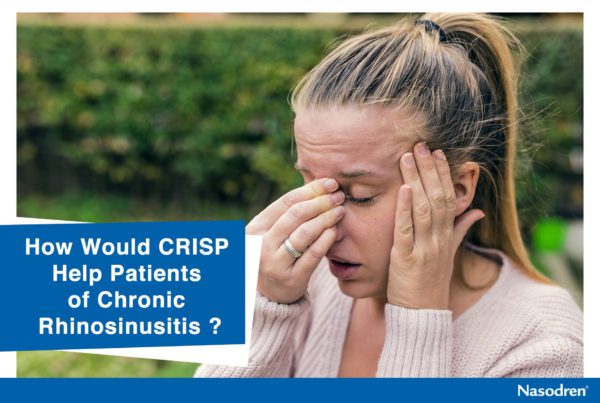Sinopsis of study of Cyclamen extract
Key messages from this study
- Cyclamen Extract nasal spray is effective and safe for the treatment of patients with ARS assessed subjectively and objectively
- The specific symptom of facial pain/pressure did improve significantly after 5-7 days of treatment with CE. This is important since facial pain/pressure is undoubtedly one of the most severe symptoms affecting the patients’ quality of life in ARS
- Endoscopic evaluation showed that mucus oedema/nasal obstruction improved significantly with CE.
- Both patients and investigators reported significantly greater treatment satisfaction with CE than placebo
- CE is a safe product for the treatment of ARS
Objective: evaluate the clinical efficacy and safety of CE nasal spray in patients with moderate to severe ARS who were also receiving antibacterial therapy
Patients: Adult men and women aged 18 – 65 years with moderate to severe ARS according to the criteria of the first European Position Paper on Rhinosinusitis and Nasal Polyps were eligible for enrolment. Patients had inflammation of the nasal and paranasal sinuses lasting > 10 days (amended shortly after study commencement with symptoms lasting more than 7 days) and < 12 weeks with at least two of the following symptoms: nasal obstruction, anterior or posterior nasal secretion, facial pain/ tension/ pressure, and/ or impaired or loss of the sense of smell. Patients (99) were randomly assigned to treatment with either CE nasal spray (48 patients) or matching placebo nasal spray (51 patients) for 15 days. One spray of 1.3 mg (0.13 mL) was administered into each nostril once daily in the evening. In addition, all patients received amoxicillin 500 mg three times daily for the first 8 days (or a suitable alternative at the discretion of the physician for those allergic to penicillin). Concomitant treatment with corticosteroids or decongestants was not allowed during the study.
Results: Efficacy and Safety
- In the primary efficacy analysis (change in mean rhinosinusitis total symptom VAS score after 5-7 days for the ITT population) there was a trend towards greater symptomatic relief with CE compared with placebo.An analysis of secondary efficacy outcomes also demonstrated a greater decrease in mean symptom scores (nasal congestion, mucus secretion, facial pain, and impairment or loss of smell) in the CE group.After 5 – 7 days a reduction in facial pain significantly favoured CE compared to placebo.
- Endoscopic evaluation demonstrated that mucus oedema or nasal obstruction was reduced to a significantly greater extent with CE than placebo after 5-7 days.
- At the end of the study, mean patient- and investigator- rated satisfaction scores were statistically significantly better in the CE group compared to placebo.
- Transient mild to moderate nasal irritation/burning occurred in both treatment groups, but was more frequent with CE. No severe adverse events were reported.
O. Pfaar, J. Mullol, C. Anders, K. Hörmann1, L. Klimek
Rhinology 50: 37-44, 2012







